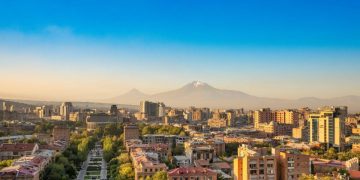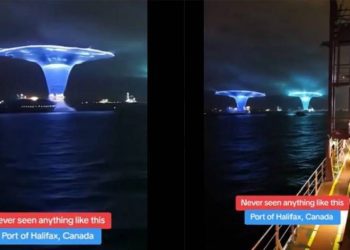ANOTHER massive solar flare has blasted from the sun days after the last one led to stunning Northern Lights displays across the UK and US – but don't expect another spectacular showing.
This latest flare is even stronger than the explosion over the weekend and it's the biggest in nearly two decades.

This flare is much bigger – but position on the sun reduces impact[/caption]

A major solar storm over the weekend saw dazzling Northern Lights displays across the UK and US[/caption]
Severe solar storms have the power to disrupt GPS satellites, power grids, electronic devices – including mobile phones – and the internet.
The less destructive and delightful outcome are dazzling green and purple auroras, commonly known as the Northern Lights.
But this new flare is not expected to cause any chaos and a light display is unlikely too.
The worst case scenario is temporary loss to radio signals, according to the National Oceanic and Atmospheric Administration (NOAA).
Earth has escaped the firing line as the flare erupted on a part of the sun rotating away from us.
NOAA put out an alert warning that the sun is “not done yet”.
The latest flare is classified by experts as X8.7, stronger than the X2.2 flare over the weekend.
And it's the largest of the current 11-year solar cycle the sun goes through.
“Due to its location, any CME (Coronal Mass Ejections) associated with this flare will likely NOT have any geomagnetic impacts on Earth,” NOAA explained.
But NOAA's Bryan Brasher told AP that the flare may turn out to have been even stronger when scientists gather data from other sources.
Meanwhile, the UK's Met Office said “any views are likely to be limited to high latitudes” with “only a slight chance of extending as far south as Scotland or similar latitudes”.
The sun is approaching the peak of its 11-year cycle, which leads to powerful bursts of energy and material being shot out at rapid speed and potentially battering Earth's magnetic field.

What are the Northern Lights?
Aurora displays occur when charged particles collide with gases in the Earth's atmosphere around the magnetic poles.
In the northern hemisphere, most of this activity takes place within a band known as the aurora oval, covering latitudes between 60 and 75 degrees.
When activity is strong, this expands to cover a larger area – which explains why displays can occasionally be seen as far south as the UK.
The visibility of the Northern Lights was increased on Friday because of an “extreme” geomagnetic storm, according to the US National Oceanic and Atmospheric Administration (NOAA).
The phenomenon appears as beautiful dancing green and purple ribbons of light that have captivated people for millennia.

































